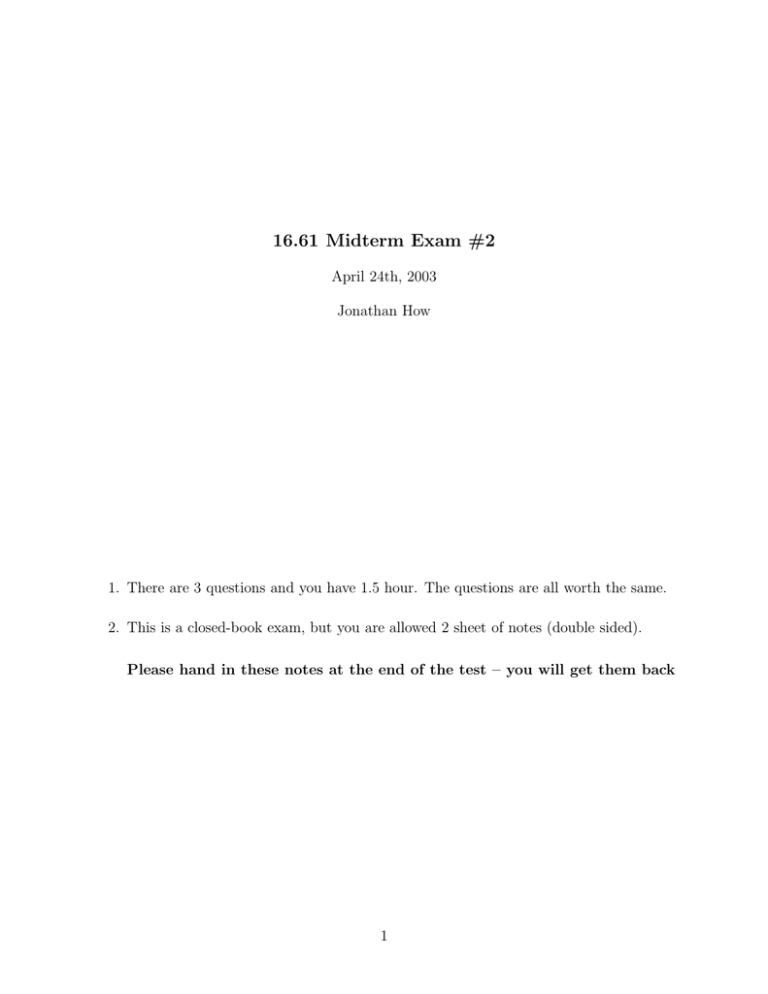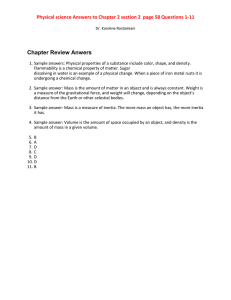16.61
advertisement

16.61 Midterm Exam #2 April 24th, 2003 Jonathan How 1. There are 3 questions and you have 1.5 hour. The questions are all worth the same. 2. This is a closed-book exam, but you are allowed 2 sheet of notes (double sided). Please hand in these notes at the end of the test – you will get them back 1 1. A horizontal turntable rotates at a constant rate ω about a fixed vertical axis through its center O. A particle of mass m can slide in a frictionless circular groove of radius r which is centered at O � , which is r/3 from O. The particle is disturbed slight from its initial conditions θ(0) = 0 and θ̇(0) = 0 in the direction of positive θ, where θ is measured relative to the turntable. (a) Find the inertial velocity of the mass, and write it in terms of the components for an inertial frame whose axes are aligned with the edges of the page. (b) Use Lagrangian techniques to show that the differential equation of motion is ω2 θ¨ − sin θ = 0 3 2. Given a rigid body with the inertia matrix (reference point is the center of mass): I = −100 150 0 0 250 0 −100 0 300 kg · m 2 (a) Solve for the principal moments of inertia. (b) Find a coordinate transformation to the principal axes (X, Y, Z) which diagonal­ izes this inertia matrix. Does the resulting transformation make sense (relate it to the elements in the original inertia matrix)? (c) Given this diagonal inertia matrix, discuss the stability of the rotation of the rigid body about each of the principal axes. 2 3. A box of mass mo supports a simple pendulum of mass m and length l. A spring of stiffness forms a horizontal mass-spring system with the box which can slide without friction on a horizontal surface. (a) Use Lagrangian techniques to find the differential equations of motion of the system. (b) What are the linearized equations, assuming that both x and θ are small? (c) Modify the Lagrangian in part (a) to include a damper c that acts in parallel with the spring. What are the new equations of motion? 3






